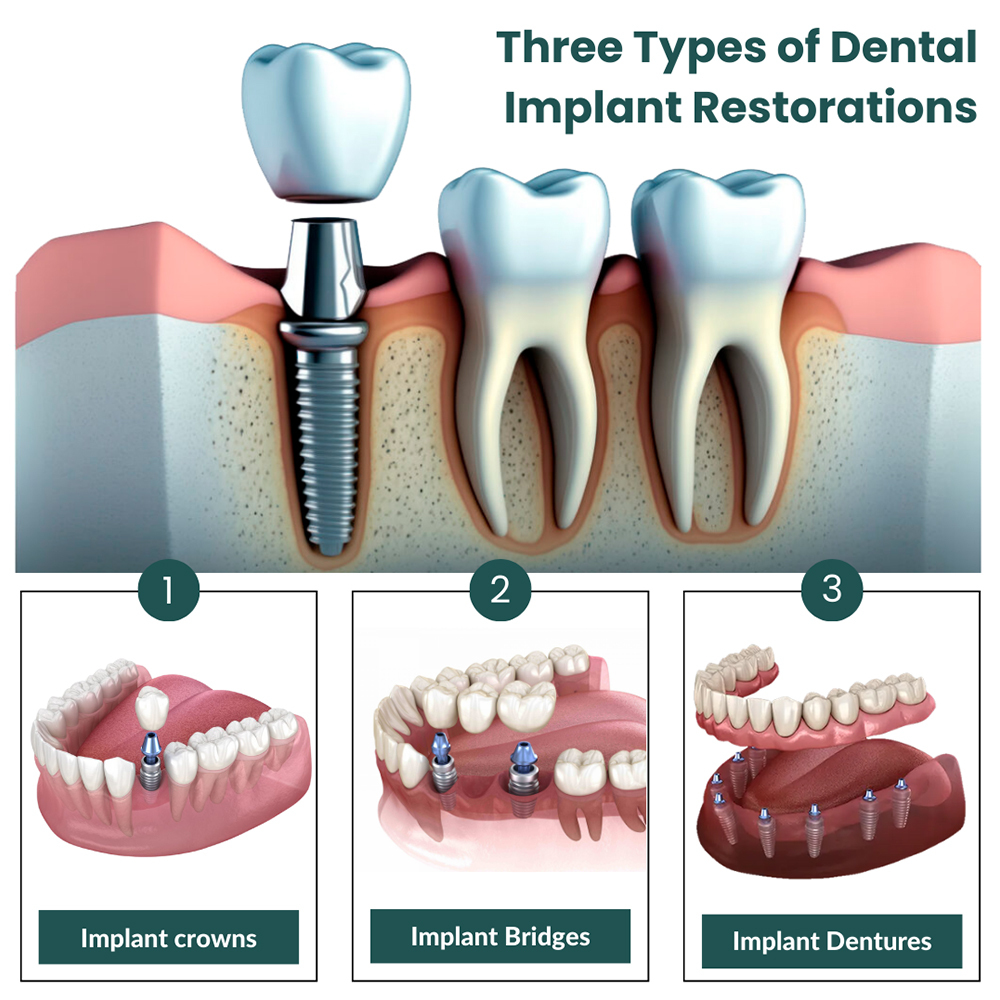Our Dental Sense Ideas
Our Dental Sense Ideas
Blog Article
The Only Guide to Dental Sense
Table of ContentsOur Dental Sense PDFsEverything about Dental SenseFascination About Dental SenseThe Ultimate Guide To Dental Sense
are medical gadgets surgically implanted right into the jaw to restore a person's capacity to eat or their appearance. They offer support for man-made (phony) teeth, such as crowns, bridges, or dentures. When a tooth is shed due to injury or condition, a person can experience problems such as quick bone loss, defective speech, or adjustments to chewing patterns that lead to discomfort.Dental dental implant systems consist of an oral implant body and oral implant joint and may additionally consist of an abutment addiction screw. Root canal procedure. The dental implant body is operatively put in the jawbone in place of the tooth's origin. The oral implant joint is usually affixed to the implant body by the joint addiction screw and expands with gums right into the mouth to support the connected synthetic teeth
(https://www.goodreads.com/user/show/186244556-matthew-music)Framework of The Oral Implant System choosing dental implants, speak to your dental service provider regarding the possible benefits and dangers, and whether you are a prospect for the treatment. Points to think about: Your general health and wellness is a crucial consider figuring out whether you are a great prospect for dental implants, the length of time it will certainly require to heal, and how long the dental implant may remain in area.
Smoking cigarettes may affect the healing procedure and reduce the long-term success of the implant. The recovery process for the implant body might take numerous months or longer, throughout which time you commonly have a short-lived abutment in place of the tooth. the oral implant treatment: Very carefully comply with the oral hygiene directions offered to you by your oral company.
Unknown Facts About Dental Sense
Implant failing can cause the demand for one more operation to fix or replace the dental implant system. Restores the ability to eat Brings back aesthetic appearance Aids maintain the jawbone from shrinking as a result of bone loss Protects the health and wellness of the surrounding bone and gum tissues Aids maintain nearby (neighboring) teeth steady Boosts lifestyle Damage to surrounding all-natural teeth throughout dental implant placement Injury to the surrounding cells during surgical treatment, such as sinus perforation Injury during surgical treatment (for example, fracture of surrounding jawbone) Insufficient feature, such as really feeling like the teeth do not attack with each other generally An experience that the tooth hangs or turning in position resulting from an abutment screw loosening Implant body failure (looseness of the implant body) as a result of systemic infection, which may be more probable in clients with unrestrained diabetes due to neighborhood infection in bone and gum tissues supporting the dental implant body because of postponed healing, which might be most likely in patients that smoke Problem cleaning the periodontals around the dental implant, leading to poor oral hygiene Untreated gum illness Post-surgical feeling numb due to nerve impingement or damage Constantly notify healthcare companies and imaging service technicians that you have oral implants prior to any magnetic resonance imaging (MRI) or x-ray treatments.
FDA is not familiar with any type of negative occasions reported for MRI or x-ray procedures with dental implants. Oral implants systems are typically made of materials that follow worldwide consensus criteria of the International Company for Standardization (ISO) or ASTM International. These criteria have information of what makes a safe product.

A dental implant is a structure that replaces a missing tooth. With screw-like devices, the specialist inserts a dental implant right into the jawbone, and it works as a support for a man-made tooth, called a crown. A tool called an abutment links the artificial tooth to the oral implant. The crown is tailor-made to fit the individual's mouth and match the color of their teeth.
Getting My Dental Sense To Work
Some people are not qualified for oral implant surgical procedure. It is for dental doctors to run on people with: intense illnessuncontrollable metabolic diseasebone or soft tissue condition or infectionIf these concerns are fixed, an individual can have the surgical procedure. In, dental cosmetic surgeons avoid operating people with: If individuals with any one of the above undertake oral implant surgical treatment, there is a greater risk of the implant stopping working.

Oral dental implant surgical procedure is an individualized process. It's not the very same for every person. But the following gives a general summary of what you can anticipate your dental expert, dental doctor, periodontist or prosthodontist to do: Put the implant operatively. Give you time to recover. Connect the article and last crown, bridge or denture.
Next, your surgeon will thoroughly place the oral implant into your jaw. Your specialist will certainly reposition your gum tissues and shut the cut with stitches. If your dental implant is near the front of your mouth, your dental practitioner will make a short-term tooth for you to use up until you recover. By doing this, you will not have a void in your smile while you recoup.
An Unbiased View of Dental Sense
During the recovery stage, your jawbone needs to fuse to the oral implant. This procedure can take anywhere from three to 9 months.
When your dental implant heals, your dental professional can affix the joint (small adapter article) and your last remediation (crown, bridge or denture). This generally takes regarding one hour to complete and may require a 2nd minor surgery. You shouldn't really feel any type of pain during your dental implant procedure due to the fact that your supplier will certainly make use of drug to numb your gums.
Report this page